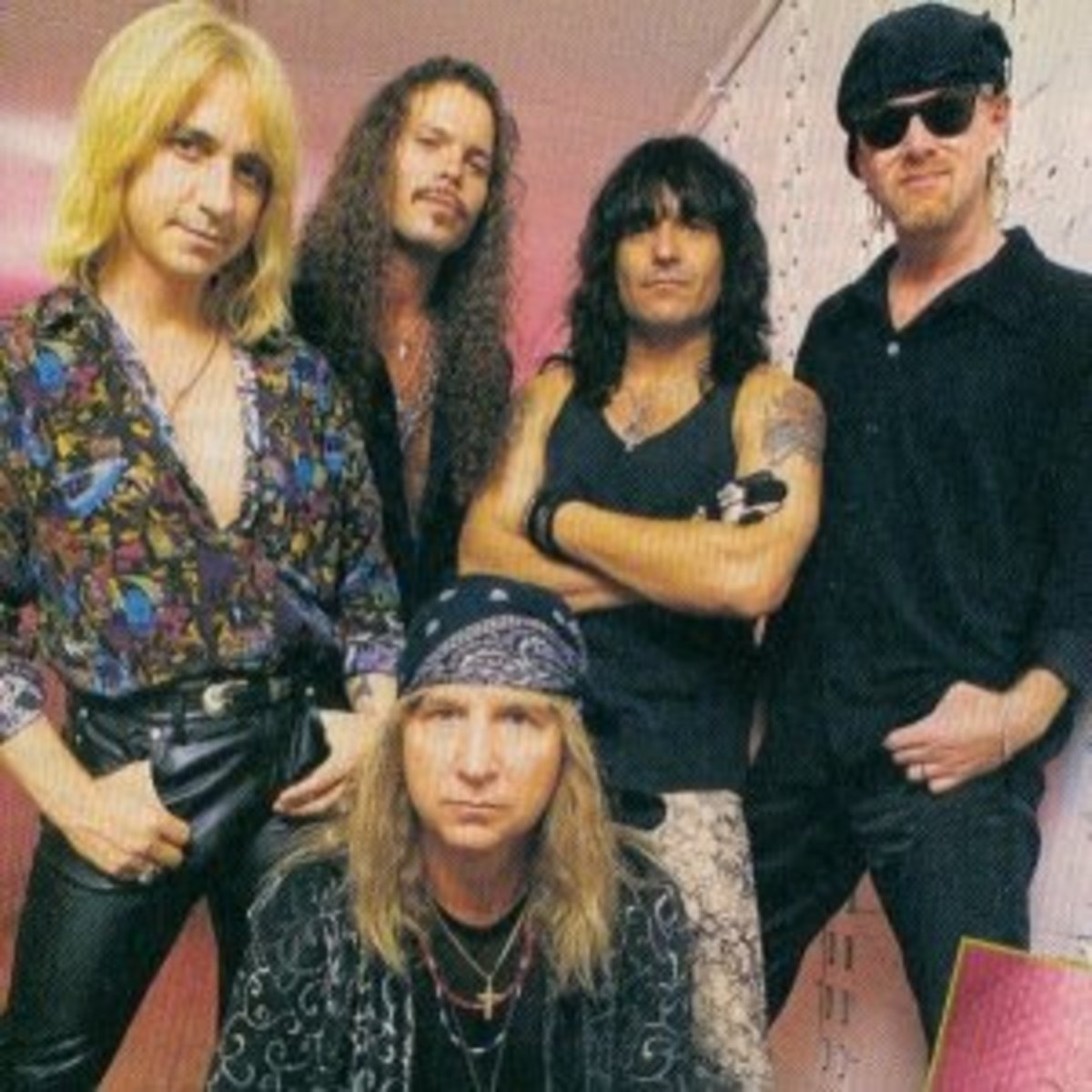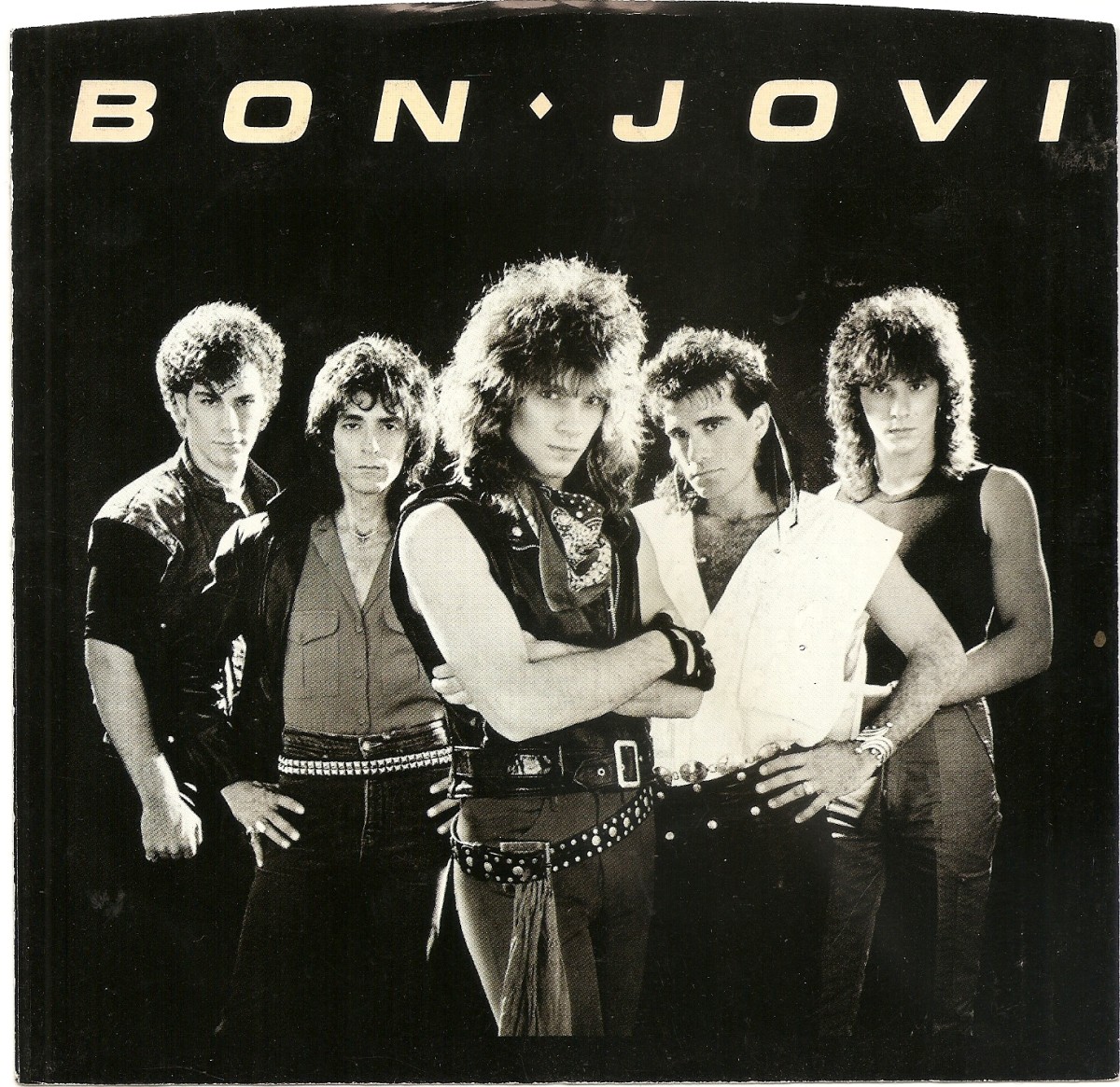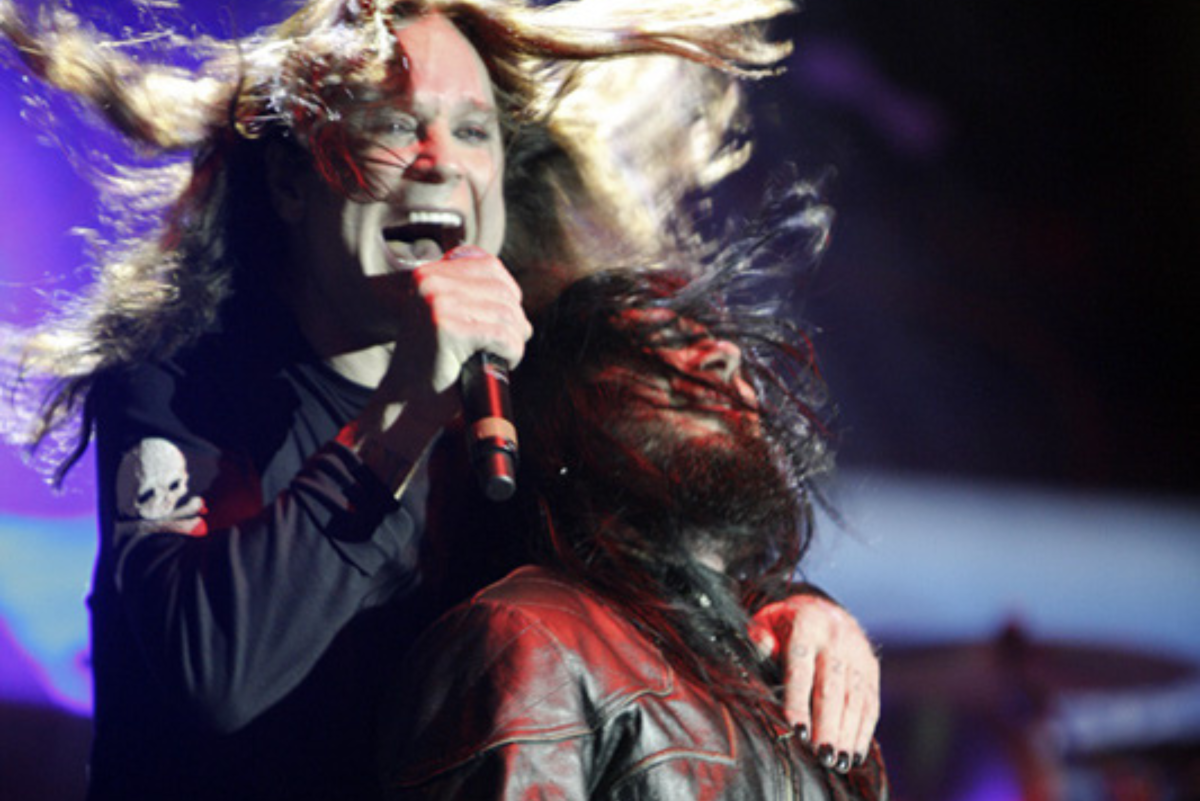AC/DC - Highway to Hell - The Making of a 40 Year Old Classic

Released on 27th July 1979, the fifth international studio album from AC/DC, would finally propel the Aussie Rockers to Global stardom, after half a decade of relentless touring and conquering Europe and Australasia, the triumph would be tinged with tragedy, as it became legendary lead singer Bon Scott's final epitaph.
AC/DC had experienced a number of personnel changes from the bands formation in 1973 in Sydney, Australia and by 1977, had finally settled into a stable line-up, with the bands founders and primary songwriters Malcolm and Angus Young playing rhythm and lead guitars, Ronald "Bon" Scott on vocals, along with Phil Rudd on drums and Cliff Williams on bass guitar, who had joined the band before the last studio album "Powerage", following the engineered departure of Mark Evans.
1978 saw the release of the band's first "live" album - "If You Want Blood (You've Got It)" ,based predominately on recording's of the bands' April 1978 concert at The Apollo, in Glasgow in Scotland, which held a certain poignancy , given that it was the "hometown" of The Young's, as well as Scott. Whilst only moderately successful on it's release, it has since retrospectively been viewed by many Rock Music critics, as one of the greatest live rock music albums of all time. In the same year, the heads of the bands record label, Atlantic, were suitably impressed and were very keen for the band to break into the crucial US market and felt that they were ready to do so, but a few big changes were needed.
The Recording
The bands then manager - Michael Browning - was called into various meetings and it was agreed that for the next LP, they would need a new producer to help produce suitable songs for the all-important radio output, particularly for the U.S. market, and that to do this, they would have to oust the current production team.
The in-house producers for their Australian label, Albert Productions, had produced all their output to date, however this was more than personal , as it was not only close family friend, Harry Vanda, but also their older brother George Young who had produced all their output to date. Vanda & Young had been working together for a number of years, having previously been members of The Easybeats (Australia's answer to The Beatles) and the three brothers were incredibly close.
This was a bitter blow, but the band were given little choice by the record label. It was also muted during the one of the meetings from one of Atlantic's executive's, that perhaps the band should perhaps consider replacing Bon Scott as singer, as there were concerns about his hard partying and Rock and Roll lifestyle, but wisely, such concerns were disregarded immediately.
The band met the new producer that Atlantic has brought in, in January 1979, at Criteria Studios in Miami, Florida.
Eddie Kramer, a South African with a rich pedigree of working as producer and studio engineer with legendary bands and artists including The Beatles, Led Zeppelin, The Rolling Stones & Jimi Hendrix, however, band were not impressed. After a number of weeks and phone calls from Malcolm to the bands manager, Michael Browning in New York, it became clear that things were not working out with Kramer. Bon Scott is quoted as saying that the band told Kramer they were taking the day off and don't bother going into the studio, at which point, the band snuck into the studio and spent the day recording six songs.
During one of Malcolm's calls to Browning, who at this point was staying at a friend Clive Calder's apartment, who happened to be manager to a young South African producer ; Robert John "Mutt" Lange , who was in the apartment during one of Malcolm's frustrated calls. Although Mutt was relatively inexperienced, Browning was impressed and managed to convince Mutt Lange to take over production and within a few days, Kramer had been fired and Mutt Lange and the Band were on planes heading to the Roundhouse Studios in North London, UK . Meanwhile, back at Atlantic records, Michael Klenfner, the executive responsible for the appointment of Eddie Kramer, was looking for a new job.
By March 1979, the band were ensconced at the Roundhouse recording studio in London and were initially wary of the new young producer , however as the weeks turned to months, the bands initial weary disdain , soon turned to respect , as they realised Mutt Lange had a clear-vision, a true perfectionist and was able to coach and extract the best out of each musician, advising Angus on solo's, repeating until it was perfect and as a trained singer, coaching Bon on breathing techniques, to get the maximum performance out of his unique voice. The band were used to spending a few weeks in the studio for an album, however the weeks turned to months, with gruelling 15 hour day recording session, and finally completing the recording after the best part of three months.
The album was mixed at the legendary Basing Street Studios, North London (owned by Chris Blackwell's Island Records) in a relatively 8 days. Meanwhile, behind the scenes, the band's Manager, Michael Browning was in Australia, having issues with US Visa's and it was apparent, following touring and the costs of the studio time and all that involved, money was in short supply. With the bands publishers & record label , Albert Productions simply couldn't afford to pump more money into the band at the present time, so the Manager was under huge pressure and was looking for another investor, despite the Young's not being overly keen on yet another party coming in to take a slice of the pie .
Around the same time, the band were approached by Peter Mensch , from US agents Leber & Krebs, who already represented Aerosmith and Ted Nugent , with promises of cash investment. It was soon apparent that Michael Browning's services were no longer required and the newly appointed US based management company stepped into the breach.
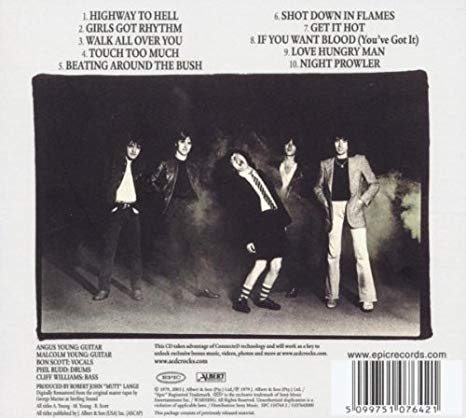
July 1979 - Release
With the recording of the new album completed, In May 1979, the band were packing up and heading back out on the road on a U.S tour, still promoting , the previous live album "If You Want Blood (You've Got It)", which was still selling well and passed the quarter of million mark.
The unanticipated extra time to record the new album had resulted in a bunch Japan concerts and one in LA being cancelled, but the new management had secured, for the first time, headline stadium gigs in Texas and the Deep South and with less than month before the new release, embarked on another relentless tour , taking in over 50+ Cities between May and the start of August 1979.
On 27th July 1979, the new album "Highway to Hell" was released simultaneously in Britain, Europe and the United States. Whilst their original record label, Albert Productions retained exclusive distribution and license for Australia, the U.S., Europe distribution was licenced to Atlantic Records. Before the release, the Atlantic executives were in panic regarding the title, fearing a backlash from the more conservative Christian groups in the US bible belt, however the band stood their ground.
Mutt Lange had delivered exactly what was requested , tidying up some of the rougher pub rock edges, whilst retaining the bluesy, no nonsense rock , that had become the bands' trademark, whilst providing a more radio friendly and professional version of themselves, which was exactly what was needed to finally crack the American market.
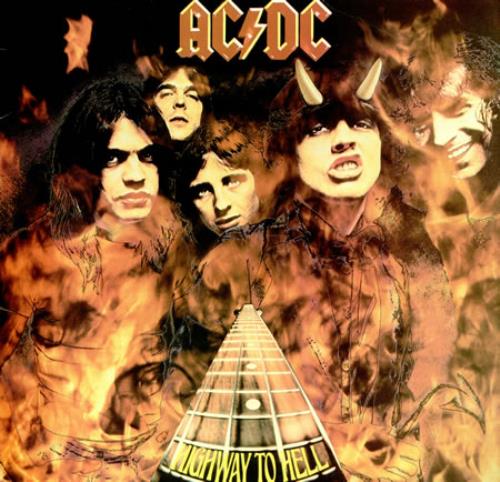
Track 1 - Highway to Hell
The ten track album opens with the title track, "Highway to Hell", with it's unmistakable A, D/F# ,G chord intro. Malcolm has been quoted as saying that when they came up with that intro during the earlier rehearsals in Miami, they immediately knew they had found something special and he was absolutely right. The title was apparently referenced back to a comment Angus made in an interview, along with Bon, responding to a question about touring. Many have since cited that this is perhaps AC/DC finest song. Released as the first 7" Single from the album, on the same day, it featured "If You Want Blood (You Got It)" on the B-Side. The single peaked at #47 in the U.S. Billboard 100, but fared better in the UK & European charts.
Track 2 - Girls Got Rytham
The more upbeat "Girls Got Rhythm", with Bon's lyrics managing to stay on the right side of bawdy, observing his adoration of one of his many previous female partners, no doubt. Released as a second single from the Album, in November 1979, the standard 7" had "Get It Hot" as the B-Side, it was released also, in the U.K. a 4-track EP, with "If you want Blood (You Got It) along with two live tracks taken from the previous live album - "Hell Ain't a Bad Place to Be" and Rock N'Roll Damnation", the EP also featured a rather splendid gatefold sleeve, with Angus stood with a burning guitar.
Track 3 - Walk All Over You
"Walk All Over You" begins with a slow intro, before launching into a fast paced verse , before slowing back down with the chorus, backed by Phil Rudd's rock steady drumming. At over five minutes, one of the longer songs on the album, with a typically high energy Angus solo around the 3 minute mark.
Track 4 - Touch Too Much
"Touch Too Much" many have observed has Mutt Lange's influence all over it and it's been mentioned that it is Mutt Lange's favourite track from the album. It's true you can hear very similar vibes with another one of his subsequent band's, Def Leppard. Featuring perhaps one of Bon's best lyrics "She had a face like an angel, smiling with sin, and a body like venus with arms" . It was the last 7" release from the album, released on 25th January 1980, it featured "Live Wire" and "Shot Down in Flames" on the B-Side.
Track 5 - Beating Around The Bush
The last track on side 1, "Beating Around The Bush" , some observers have indicated the intro is a homage to early Peter Green era Fleetwood Mac's "Oh Well". Bon's voice and delivery are on top form in this track, singing about a failing relationship, coupled with a great groove from Angus, as always. The track was a essentially lyric rewrite from an earlier song "Back seat Confidential" , although the tune remained pretty much the same (the song can be heard in the later "Bonfire" box set , on the "Volts" disk, released in 1997)
Track 6 - Shot Down in Flames
Side Two opens with another solid track - Shot Down in Flames, Bon's lyrics of when a night doesn't go to plan! Again, some awesome lead guitar from Angus and example of yet another track that completely delivers
Track 7 - Get it Hot
Get it Hot, has been likened by some critics as a slightly punky Rolling Stones! Although considered by some to be perhaps one of the weaker songs on the album, it did make it as a B-Side to "Girls Got Rhythm" released as a UK single on 9th November 1979
Track 8 - If You Want Blood (You Got It)
"If You Want Blood (You Got It)" - The song took it's title from the Live album released in the previous year and has risen to become one of AC/DC's Classics. The title and some of the lyrics were inspired by a press interview attended by Bon & Angus, in which they referred to one of their tougher upcoming gigs, jokingly comparing themselves to Christians being thrown to the lions and if the audience want blood, they're gonna get it!
Track 8 - Love Hungry Man
"Love Hungry Man" has been considered by many, to be the weakest song on the album, with even Angus in recent years, referring to it as perhaps their worst ever song! However, the production carries a lot of Mutt Lange's influence, similar to "Touch Too Much".
Track 9 - Night Prowler
With a very laid back bluesy vibe, in comparison to the other tracks on the album. The longest song on the album at around six and a half minutes, offers a slightly unsettling image, although the band maintained the songs meaning is related to young teenage love, rather than anything more sinister, the mood is lifted right at the end with Bon's Robin Williams reference. This didn't stop the song being controversial, however, when it was referenced in a trial of a notorious serial killer Richard Ramiraz, who claimed to be an avid fan and cited this track as one of his favourites.
Reception and Promotion
in the weeks following release, the album garnered good reviews in the music press and quickly rose up the charts and became the bands first top 10 hit in the U.K, reaching #8 and subsequently spending 32 weeks in the album chart . In the US, it was the bands first to break the US charts and peaked at #17.
In August 1979, the band embarked on another gruelling five month world tour, to promote the new album. Starting in Blizem, Belgium and after nine gigs, heading over to the US , before returning to the UK in October 1979 and then across to mainland Europe. After a short break for Christmas, in which some of the band returned to Australia to see family, the band resumed the tour, taking in a number of European cities before the final show in Southampton, on the English south coast, on 27th January 1980.
Although the band have always maintained they were never a "singles" band, the record company issued a number of 7" Singles to promote the album.
The first 7" Single featuring the title track was released simultaneously with the album , with "If You Want Blood (You've Got It) " on the B-Side, the single was well received and charted in most countries, peaking at #4 in Britain and # .
"Girls Got Rhythm/Get it Hot" was released 9th November 1979, quickly followed by a 4 track EP featuring the tracks ; "Girls Got Rhythm/If You Want Blood (You've Got It)/Hell Ain't A Bad Place To Be/Rock N'Roll Damnation" (the E.P featured a gate-fold sleeve with Angus next to a burning guitar).
"Touch Too Much/Live Wire/Shot Down in Flames" was the final 7" released 25th January 1980, the B-Side tracks were live recordings from previous tour. The single release performed reasonably well in Europe, peaking at #13 in Germany and #29 in the UK, prompting an invite to perform on the long running British Chart TV show "Top Of The Pops", which aired on 7th February 1980.
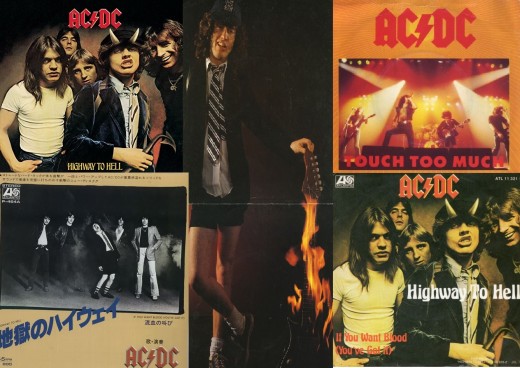
Back into the studio and subsequent tragedy..
Within a month, members of the band where back in the studio in London starting early preparations for the next album , on the 15th February 1980, Bon was in the studio with Angus and Malcom, helping out on drums, while the brothers formulated the new song and chord ideas that would later in the year, appear on the new album.
For the next few days, Bon caught up and spent time with friends, in particular, a new Japanese girlfriend and spent some time alone song writing. On the night of 18th February, he rang his close friend asking if she wanted to go to club in Camden (a suburb in North London) with him, to see a band play, however, having already made plans, declined, but mentioned that a mutual acquaintance, Alistair Kinnear, was with her and would be interested in going out and would drive over to pick him up. The events over the next 12 hours are well documented, if a little hazy, as to the exact timeline and individuals present, however the nights events unfolded with the pair returning to Bon's flat, in South London, however on arrival, Bon had passed out in a drunken state. Kinear, unable to revive him, called a mutual friend, who advised this was not uncommon and to leave him in the car to sleep it off.
Malcolm received a call later the following day with the unbelievable news that their close friend and colleague, Bon Scott, was dead.
The following weeks must have been a maelstrom of confusion for the remaining members of the band, having finally reached the point of success, that they had all worked for years to achieve, to be snatched away in an instant.
The Coroner's report concluded that the singer had died from acute alcohol poisoning.
The band were undecided on the future and it's believed that Bon's Dad, Chick Scott, took Malcom Young to one side at Bon's funeral, in Perth, Australia, and told him in no uncertain terms, that the band should continue, as it is what Bon would have wanted.
The Legacy
"Highway to Hell" had by now broke the band into the all important US market and undoubtedly laid a rock solid foundation for the band's future success in becoming one of the biggest and most successful Rock bands in history, with the follow-up album "Back in Black", released a mere five months after Bon's passing, becoming one of the top 10 most successful albums of all time (on which, while the writing was credited to the Young's and replacement Brian Johnson, there has been growing speculation that perhaps Bon Scott had more input than he was given credit for). The album was dedicated to Bon and while it is believed the title was thought up before Bon died, it couldn't have been more poignant.
The album subsequently spent over 40 weeks in the UK album charts, and first top 20 U.S hit, peaking at #17. The album would also re-enter the charts in the late 2000's and spend a further 8 weeks in the UK album charts, mainly on the back of a campaign to get the single "Highway to Hell" to #1, in protest at Simon Cowell's latest reality TV competition winners for that year. To date, In their home country of Australia, the album would ultimately sell over 350,000 copies, in the UK over 300,000 and in the US alone, it has now sold over 7 million, making it 7x platinum, it also fared well in nearly all record buying countries across the globe, further helped by the title track appearing on various movie soundtracks, such as Final Destination 2 and Iron Man 2.
Brian Johnson was perhaps the best replacement the band could have hoped for, however, for many, even today, Bon Scott was irreplaceable and despite AC/DC existing as a band for nearly 47 years, many believe most of the bands' best music was produced during the short five years or so, that Bon Scott was the front man. A legacy, I think Bon Scott would have been proud.
© 2019 Kieran Clarke




